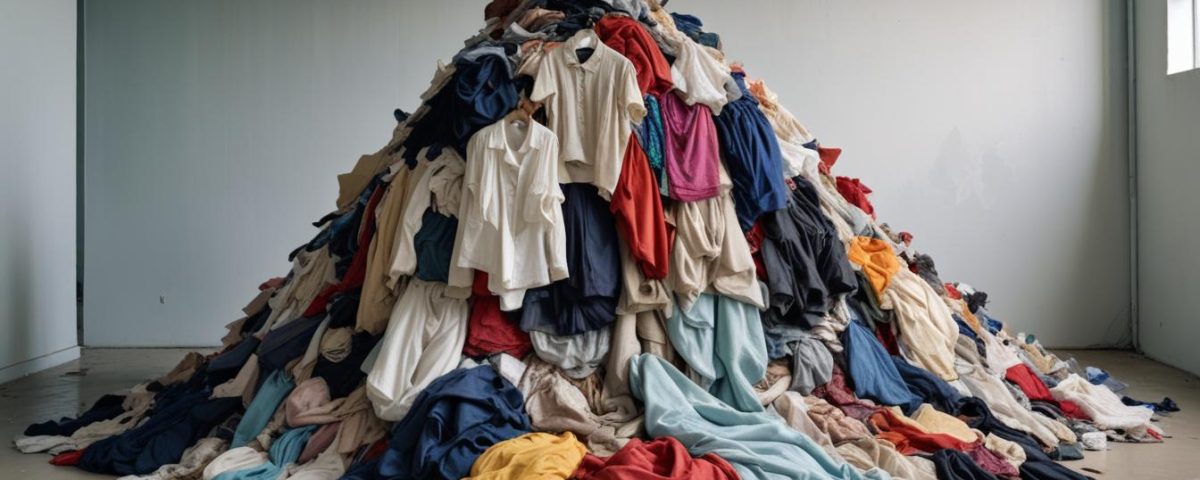- The United States generates around 25 billion pounds of textile waste every year.
- “Textiles” include clothing items, shoes, towels, bed linens, and window coverings.
- This averages out to about 82 lbs. of textile waste for each of us!
You may be someone who always sells or donates your gently used items. If so, good for you! Also if so, you are in the minority. Only 15% of the United States’ textile waste gets donated or recycled, meaning 21 billion lbs. of textile waste ends up in our landfills every year. And clothing can take several months to years to decompose, depending on the fabric type.
Why does such a low percentage of material get sold or donated? We simply don’t know what to do with our items that aren’t so “gently” used. When a dress shirt has a big mustard stain on the front, no one can wear it. When a knit top gets pilled up or snagged, it gets tossed out.
While you can’t make your textiles last literally forever, one way to greatly extend their life is professional cleaning.
Dry cleaning helps to prevent 2 big issues that contribute to clothes no longer being wearable, and potentially ending up as textile waste:
- Stains you cannot remove at home.
- Shrinkage, fading, thinning, pilling, and other wear or damage to fabric that makes clothes look old, tired and worn.
Clothing Stains
Professional dry cleaners have an array of specialized stain removers at their disposal. Different kinds of stains – e.g., mustard, oil, wine, etc. – each have a specialized process for removal. That “all-purpose” spray bottle of stain remover in your laundry room doesn’t take into account the type of fabric the garment is made from, the type of dye that was used on the fabric, or the composition of what stained the fabric. The human dry cleaner, who evaluates, tests and removes each stain by hand, does!
Other Damage to Textiles
The specialized care and attention garments receive during the dry cleaning process extends the life of those clothes. Dry cleaned clothing, even clothing that does not necessarily require dry cleaning, simply looks better for longer when it’s professionally cleaned and steamed or pressed. Clothes are an investment, and so should be their care.
Additionally, rather than replacing leather or suede shoes, jackets, etc., or items like curtains, pillows, and bed linens, having them professionally cleaned extends their life and can reduce textile waste.
What About When Items Can’t Be Salvaged?
According to a recent Savers survey, 62% of respondents threw clothes or household goods in the garbage, because they didn’t think a donation center would take their items. Perhaps it seems insulting that people who buy secondhand clothes should have to sort through items that are ‘ruined,’ so we’d rather throw those items out.
What a lot of people don’t know is that many charities who accept clothing donations will gladly take anything, despite the condition, as long as it's clean and dry. For instance, Goodwill stores take all textiles, whether wearable/usable or not. You don’t even need to separate out your donation items. The organization employs specialists who sort through all donations, to determine what can be resold. The ripped, stained, and non-reusable garments (think underwear) are pulled out and set aside right away. Anything that can’t go on the racks to be sold in a store is sent to a textile recycler, where it’s turned into rags, fiber fill or carpet padding, amongst other things.
Sure, it may seem weird to bag up your holey socks and used undies to drop off at a “donation” site, but as long as they are clean and dry, that’s what those locations and staff are trained to process. They aren’t going to try and resell these kinds of items. The recipients will know what to do with whatever comes in, even if it’s that some of it just gets shredded up to stuff a couch cushion.
The bottom line: whatever we donate simply doesn’t end up in a landfill. That’s good for the earth, and good for all of us. So let’s keep clothes out of the garbage, no matter what condition they’re in.
--
Author's note: This article is for informational purposes, and is not an endorsement of Goodwill. Here you can access a list of places in Omaha, other than Goodwill, that accept charitable donations. We have not, however, verified if any of these organizations recycle donated clothing that is unable to be reused.
Photo Credit:
Freepik






